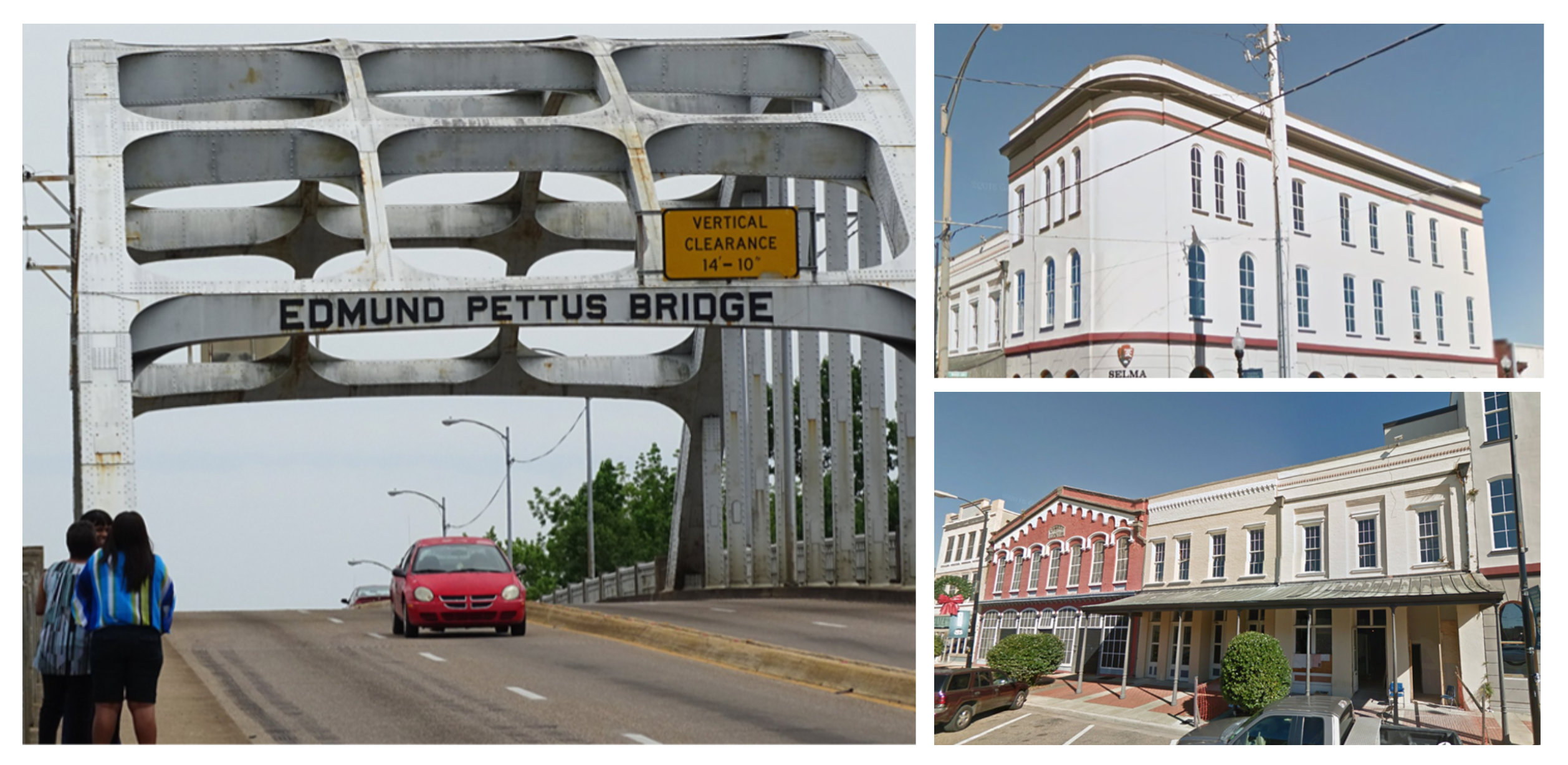National Park Service Acquires Property to Expand Voting Rights Interpretive Center at Edmund Pettus Bridge
SELMA – The Selma to Montgomery National Historic Trail, operated by the National Park Service (NPS), today announced the acquisition of six properties near the historic Edmund Pettus Bridge in Selma for the construction of a $10 million interpretive education center commemorating the Selma to Montgomery voting rights marches of 1965.
The properties – comprising .65 acres and located at 2, 4, 6, 8 and 10 Broad St. and 1119 Water Ave. – were donated by the National Park Foundation (NPF), which purchased the properties from the Alabama Department of Transportation with project assistance from the City of Selma and the Federal Highway Administration. The NPF funding was made possible through an anonymous donor and the Fund II Foundation.
“This acquisition will better position us to interpret how the Selma voting rights struggle helped draw the nation closer to the promise of democracy,” said Joy G. Kinard, superintendent, Selma to Montgomery National Historic Trail. “We appreciate the National Park Foundation’s support in this effort, which is primed to help spur economic development and recognize the foot soldiers central to this story.”
The Selma to Montgomery National Historic Trail has operated a visitor contact station at 2 Broad Street since 2011. The expansion project, prioritized for investment in President Biden’s fiscal year 2022 budget, will expand the center’s footprint and provide a state-of-the-art visitor experience with a focus on educational programming, accessibility, and opportunities for the community. The facades at 8-10 Broad St. will be retained and preserved as part of the historic streetscape where marchers trekked in 1965.
“NPF is committed to helping the National Park Service share a fuller and more comprehensive story of America,” said Will Shafroth, president and CEO of the National Park Foundation. “Improving the interpretive center in Selma will provide people greater access and the opportunity to better understand and appreciate the historic struggle for voting rights that unfolded in Selma during a critical moment in the civil rights movement.”
Construction of the expanded center is scheduled to get underway early next year with completion expected ahead of the 60th Anniversary of Bloody Sunday in March 2025. The NPS has actively engaged communities and stakeholders in a series of public meetings to help inform planning and design. Additional meetings and adjustments in site operations necessary to accommodate construction will be announced in the coming months.
Established in 1996, the Selma to Montgomery National Historic Trail commemorates, interprets, and preserves the important stories of the Selma voting rights movement and the routes of the Selma to Montgomery voting rights marches of 1965. The 1965 Selma to Montgomery voting rights marches are recognized as pivotal events among the campaigns for human rights in the United States. Together, the movement and marches were critical catalysts to the passage of the Voting Rights Act of 1965. Today the Selma to Montgomery National Historic Trail serves as an enduring testament to the continued struggle to preserve the right to vote as a fundamental cornerstone of American democracy.
For more information, visit nps.gov/semo.

About the National Park Service
More than 20,000 National Park Service employees care for America’s 423 national parks and work with communities across the nation to help preserve local history and create close-to-home recreational opportunities. Learn more at: www.nps.gov, on Facebook: www.facebook.com/nationalparkservice, Twitter: www.twitter.com/nationalparkservice, and YouTube: www.youtube.com/nationalparkservice.
About the National Park Foundation
The National Park Foundation works to protect wildlife and park lands, preserve history and culture, educate, and engage youth, and connect people everywhere to the wonder of parks. We do it in collaboration with the National Park Service, the park partner community, and with the generous support of donors, without whom our work would not be possible. Learn more at nationalparks.org.